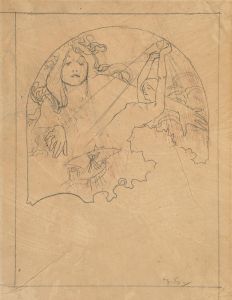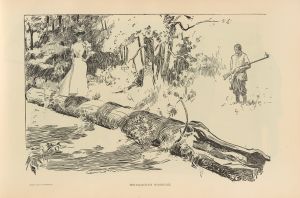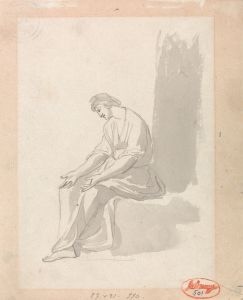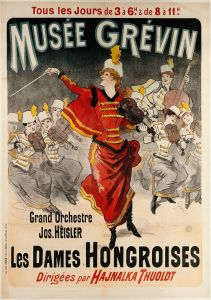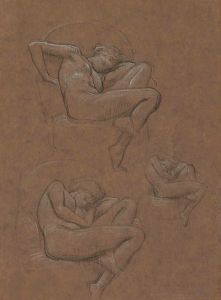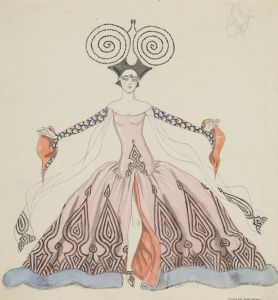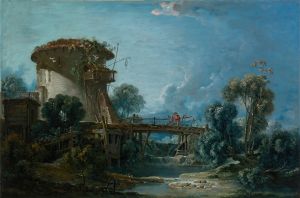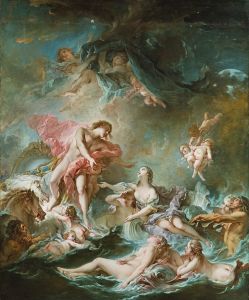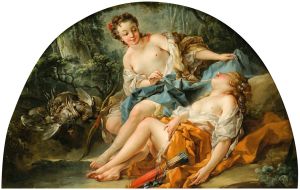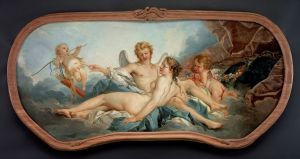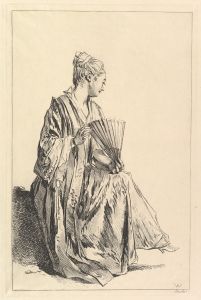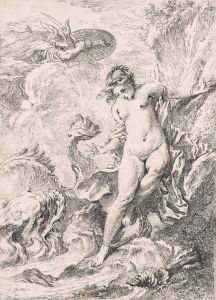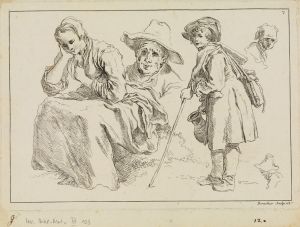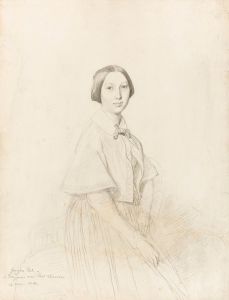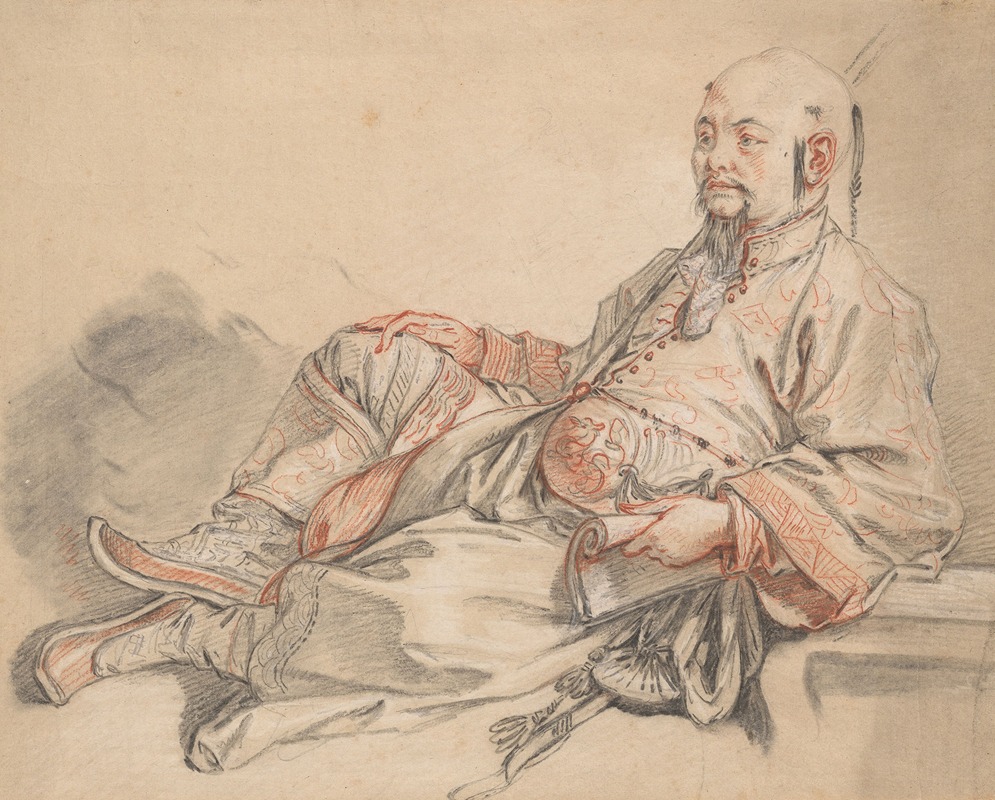
Man in Chinese Costume, Reclining
A hand-painted replica of François Boucher’s masterpiece Man in Chinese Costume, Reclining, meticulously crafted by professional artists to capture the true essence of the original. Each piece is created with museum-quality canvas and rare mineral pigments, carefully painted by experienced artists with delicate brushstrokes and rich, layered colors to perfectly recreate the texture of the original artwork. Unlike machine-printed reproductions, this hand-painted version brings the painting to life, infused with the artist’s emotions and skill in every stroke. Whether for personal collection or home decoration, it instantly elevates the artistic atmosphere of any space.
François Boucher, a prominent French painter of the Rococo period, is renowned for his idyllic and voluptuous paintings, which often depict classical themes, pastoral scenes, and allegorical subjects. One of his lesser-known works is "Man in Chinese Costume, Reclining." This painting reflects the 18th-century European fascination with Chinoiserie, a style that incorporates Chinese artistic influences into European art and design.
Boucher was born in Paris in 1703 and became one of the most celebrated artists of his time. He was a favorite of Madame de Pompadour, the chief mistress of King Louis XV, and his works were highly sought after by the French aristocracy. Boucher's art is characterized by its playful and decorative qualities, often featuring soft colors, delicate brushwork, and an emphasis on sensuality and elegance.
"Man in Chinese Costume, Reclining" exemplifies the Chinoiserie trend that swept through Europe during the 18th century. This movement was fueled by increased trade with China and the Far East, which brought exotic goods and artistic influences to Europe. European artists and craftsmen began to incorporate these elements into their work, creating a hybrid style that was both exotic and familiar.
In this painting, Boucher portrays a man dressed in what was perceived as traditional Chinese attire, reclining in a relaxed pose. The figure's costume is richly detailed, with intricate patterns and vibrant colors that reflect the European interpretation of Chinese fashion. The setting is likely imagined, as was common in Chinoiserie works, blending elements of fantasy with perceived authenticity.
Boucher's depiction of the reclining man is not intended to be an accurate representation of Chinese culture or attire. Instead, it reflects the European fascination with the exotic and the unknown. The painting serves as a testament to the cultural exchange between East and West during this period, albeit through a lens of European interpretation and imagination.
The Rococo period, during which Boucher created this work, was marked by a shift away from the grandeur and formality of the Baroque era. Artists like Boucher embraced lighter themes, focusing on pleasure, beauty, and the whimsical aspects of life. This painting, with its relaxed subject and decorative style, fits well within the Rococo aesthetic.
Boucher's influence extended beyond his lifetime, as his works continued to be admired for their technical skill and charming compositions. "Man in Chinese Costume, Reclining" is a fine example of how Boucher and his contemporaries engaged with global influences, creating art that was both a product of its time and a reflection of the broader cultural currents at play.
While not as widely recognized as some of Boucher's other works, this painting remains an interesting piece within his oeuvre, offering insights into the artistic and cultural dynamics of 18th-century Europe. It highlights the period's curiosity and appreciation for the exotic, as well as the ways in which artists like Boucher navigated and interpreted these influences in their work.





